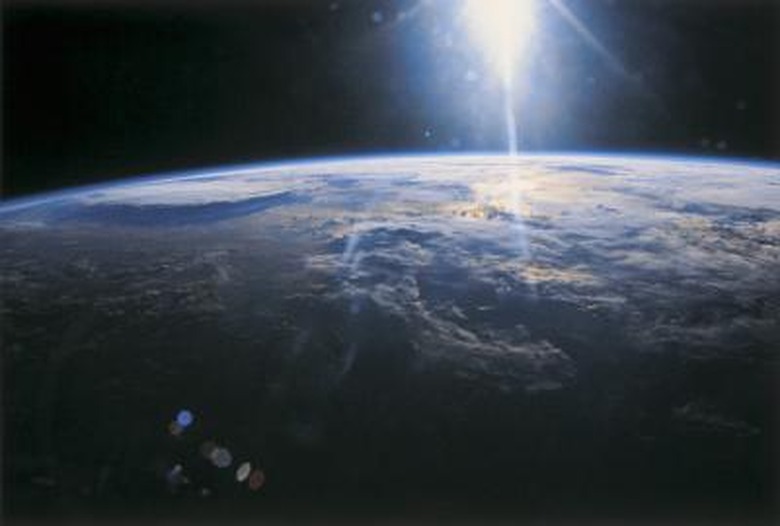What Is The Revolution Time Of The Earth?
The revolution time of the Earth can refer to how long it takes to revolve completely on its own axis or it can mean how long it takes to make it one full revolution around the sun. The revolution time on its axis is called a day and the time it takes to circle the sun once is called a year. Here we will examine both.
Significance
Significance
The Earth as it moves through space is rotating on its axis. Its axis is an imaginary line drawn straight through the Earth from the North Pole to the South Pole. If you were to visualize a skater standing straight up on the ice and spinning, then a "vertical axis" would be one going through the head down the middle of the person and out between their feet. The Earth is not "straight up" as it orbits the Sun and rotates on its axis. Instead the axis of the Earth is tilted some 23.5 degrees from the vertical position. The ideal way to visualize this is to think of the Earth as a gigantic spinning top that is tilted over to one side.
Time Frame
Time Frame
It takes the Earth 24 hours to rotate one time in respect to the sun. This is a day. In respect to the stars the Earth takes 23 hours and 56 minutes to complete one turn on its axis. This is known as a sidereal day. The best way to explain this is to imagine standing at a point on the Earth and watching the sun go across the sky, disappear, and then reappear. That would take 24 hours from start to finish. But if you were to wait for night to find a certain star as it becomes visible, wait for it to disappear and then reappear the next evening, this would take 23 hours and 56 minutes, all because the Earth had moved in its orbit around the sun during the time when the star first was visible.
Considerations
Considerations
The Earth takes 365 days and five hours to make one complete revolution around the sun. The plane that the Earth is in as it orbits the Sun is known as the ecliptic. The orbit of the Earth around the Sun is not a perfect circle. It is a very slight oval shape, meaning at some point it will be its furthest from the Sun and at another it will be at its most distant. The Earth at its closest point to the sun is 91 million miles from it; it is 95 million miles at its furthest point from the sun during its elliptical orbit.
Types
Types
Not all the planets take the same amount of time to complete a revolution on their axis or one around the sun. Mercury for example, being closer to the sun, completes a trip around it in a quarter of the time the Earth needs but takes almost 59 days to turn once on its axis. Jupiter takes 12 Earth years to make it once around the sun from start to finish but spins once on its own axis in less than 10 Earth hours.
Expert Insight
Expert Insight
The seasons are not caused by the Earth being closer or further from the sun during its revolution around it. Rather they are the result of the Earth being tilted 23.5 degrees on its axis. The hemisphere, either northern or southern, that is tilted toward the sun as the Earth orbits will experience spring and then summer while the hemisphere tilted away will have autumn and fall.
Cite This Article
MLA
Lindell, John. "What Is The Revolution Time Of The Earth?" sciencing.com, https://www.sciencing.com/what-revolution-time-earth-4587251/. 24 April 2017.
APA
Lindell, John. (2017, April 24). What Is The Revolution Time Of The Earth?. sciencing.com. Retrieved from https://www.sciencing.com/what-revolution-time-earth-4587251/
Chicago
Lindell, John. What Is The Revolution Time Of The Earth? last modified March 24, 2022. https://www.sciencing.com/what-revolution-time-earth-4587251/
